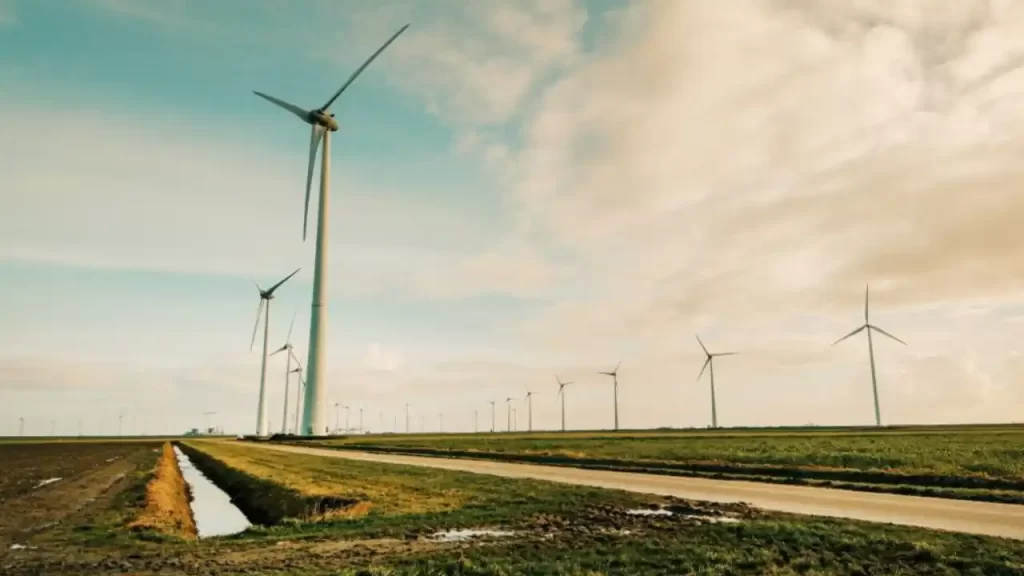Fossil fuels have gotten a free pass to destroy the Earth. Harsh heatwaves, glacier melting, sea level rise, hurricanes, wildfires, and droughts are some episodes of how fossil fuels are destroying Earth. Only the use of renewable energy can revert the damage caused by climate change. However, key stakeholders, including the basic consumers are hesitant toward mass adoption of renewable energy sources. They keep asking “Can renewable energy replace fossil fuels?”
Well, the answer is “Absolutely yes.” But to make that happen we need to take some bold actions both on the administrative level and on an individual level.
It will take time for renewable energy to fully replace fossil fuels. I hope after reading this blog post, you won’t ask can renewable energy replace fossil fuels.
What Are Some Major Non-Renewable Energy Alternatives?
There are many renewable energy sources, the most popular energy renew sources include Solar energy, geothermal energy, biomass, hydropower, tidal energy, and wind energy.
All these energy sources are available in unlimited supply and have no harmful impact on the environment. They are excellent alternatives to traditional energy sources.
Why Do We Need to Replace Non-Renewable Energy With Renewable Energy?
You must have an idea of how fossil fuels are related to climate change.
If you can’t recall, let me give you a quick recap. Greenhouse gas emissions from fossil fuels are the largest contributor to climate change; since the industrial revolution, global average temperatures have increased by around 1.1 degrees Celsius.
To avoid the disastrous impacts of climate change, global greenhouse gas emissions should be reduced to half by 2030 and achieve net zero by 2050.
Replacing non-renewable energy with renewable energy is the most important climate change mitigation strategy.
Furthermore, we need the transition because fossil fuels are in limited supply.
The total supply might last a century or two at most. The supply of fossil fuels also gets hindered due to global political scenarios, an example is the Russia-Ukraine crisis.
The conflict has fueled an agonizing energy crisis across Europe.
In comparison, renewable energy resources are just infinite in supply. Sun, wind, and ocean tides never run out of supply. Hence renewable energy sources are affordable, accessible, clean, reliable, and sustainable alternatives to fossil fuels.
Renewable energy offers multiple advantages including energy independence, lower energy bills, decentralization of energy, mitigation of climate, and so on.
The Transition From Non-Renewable Energy to Renewable Energy
The United Nations General Secretary António Guterres has declared in an address that “The time for hedging bets has ended. The world has gambled on fossil fuels and lost”. He further iterated that the prevalent inflation and gas prices are fossil fuel problems.
Therefore, the need for transition is well justified. The adoption of renewable energy sources is inevitable, it’s not a matter of why but rather a matter of when.
You May Also Read: Your Comprehensive Guide to the Best Solar Generator for Off-Grid Living
In recent years, there has been commendable progress in the renewable energy sector. Despite the rising material costs and pandemic after-effects, global renewable installation capacity set a new record in 2021. The 2021 Report from World Economic Forum (WEF) has described the progress as “Unprecedented acceleration” in recent years.
The international Energy Agency (IAE) expects the investment size to make new records this year (about an 8 % growth rate is predicted as compared to 6% growth in 2021). Moreover, the latest Assessment Report (AR 6) by IPCC indicates that the unit cost of some renewable sources of energy has reduced.
Barriers to Renewable Energy Adoption
The transition from non-renewable energy to renewable energy is happening but the pace is not what it should be. There are a few barriers to the wide adoption of renewable energy.
Let’s analyze those barriers.
Lack of International Firm Commitment
The first barrier is the lack of international commitment and motivation from world leaders to take urgent actions against climate change.
A large responsibility for the transition lies with governments, especially the developed countries having all the necessary resources. Their inaction delays the implementation of green energy policies.
Influence of Fossil Fuel Giants
The Fossil fuel industry is a mega-industry whose influence goes beyond industries and national boundaries. Fossil fuel companies such as ExxonMobil, Shell, and others have been lobbying for blocking bills related to climate change and renewable energy.
Lack of Incentives For Clean Energy Solution Providers
Fossil fuel subsidies are hampering the world’s transition toward energy renew. According to the International Monetary Fund (IMF), more than $5.9 trillion was given to the fossil fuel industry in subsidies in 2020 alone. Dividing this figure by 365 gives us approximately $11 billion a day.
That’s a huge amount, even if only a fraction of that amount is diverted towards renewable energy, we will have a profound impact on climate change.
Hence lack of incentives is one of the biggest barriers. International Energy Agency (IEA) proposes an investment of at least $4 trillion in energy renew until 2030 to achieve net-zero emissions targets by 2050.
Recommendations For a Smooth Transition to Renewable Energy
In addition to diverting fossil fuel subsidies to energy renew solutions, there are a couple of other things we need to make sure of.
You May Also Read: Top-Rated Solar Generator for RV: Unlocking the Secret to Unlimited Power
Reducing the use of fossil fuels and adopting renewable energy need some very bold and radical decisions such as:
Enforcing Pollution Rules
Many guidelines and environmental standards have been devised and many governments around the world have developed policies for emission reductions.
You May Also Read: 7 Must-Have Zero Waste Kitchen Essentials for 2024
Unfortunately, pollution rules are rarely executed. Strict enforcement of pollution rules is a prerequisite.
Improving Access to Raw Material and Machine Components
Usually, the implementation of renewable energy is hampered by the low availability of raw materials for the production of wind turbines, electric vehicles, photovoltaic solar panels, solar generators, and other components of the renewable energy system.
Moreover, training of labor is equally important as supplying raw materials and components.
Control of Oil and Gas Exploration and Drilling
The best way to limit the use of fossil fuels is by controlling oil and gas exploration. Governments should make strict legislation to restrict fossil fuel exploration and drilling.
Change in Lifestyle
The real change starts from the individual level. There are many ways in which you can ensure renewable energy adoption such as going car-free, using a bicycle, and many more.
You May Also Read: 5 Top Picks: Your Ultimate Guide to Reusable Paper Towels
Conclusion
Transitioning from non-renewable to energy renew is full of challenges and requires some bold decisions from both the government and the citizens. But that’s what time demands from us.
We have to ensure a smooth transition so that the sustainability of the future generation is secured.
You May Also Read: Dishwashing Done Right: 5+ Best Energy Efficient Dishwashers To Buy
Let’s kick start the renewables revolution and save the Earth from destruction.


3 thoughts on “Can Renewable Energy Replace Fossil Fuels?”
Comments are closed.